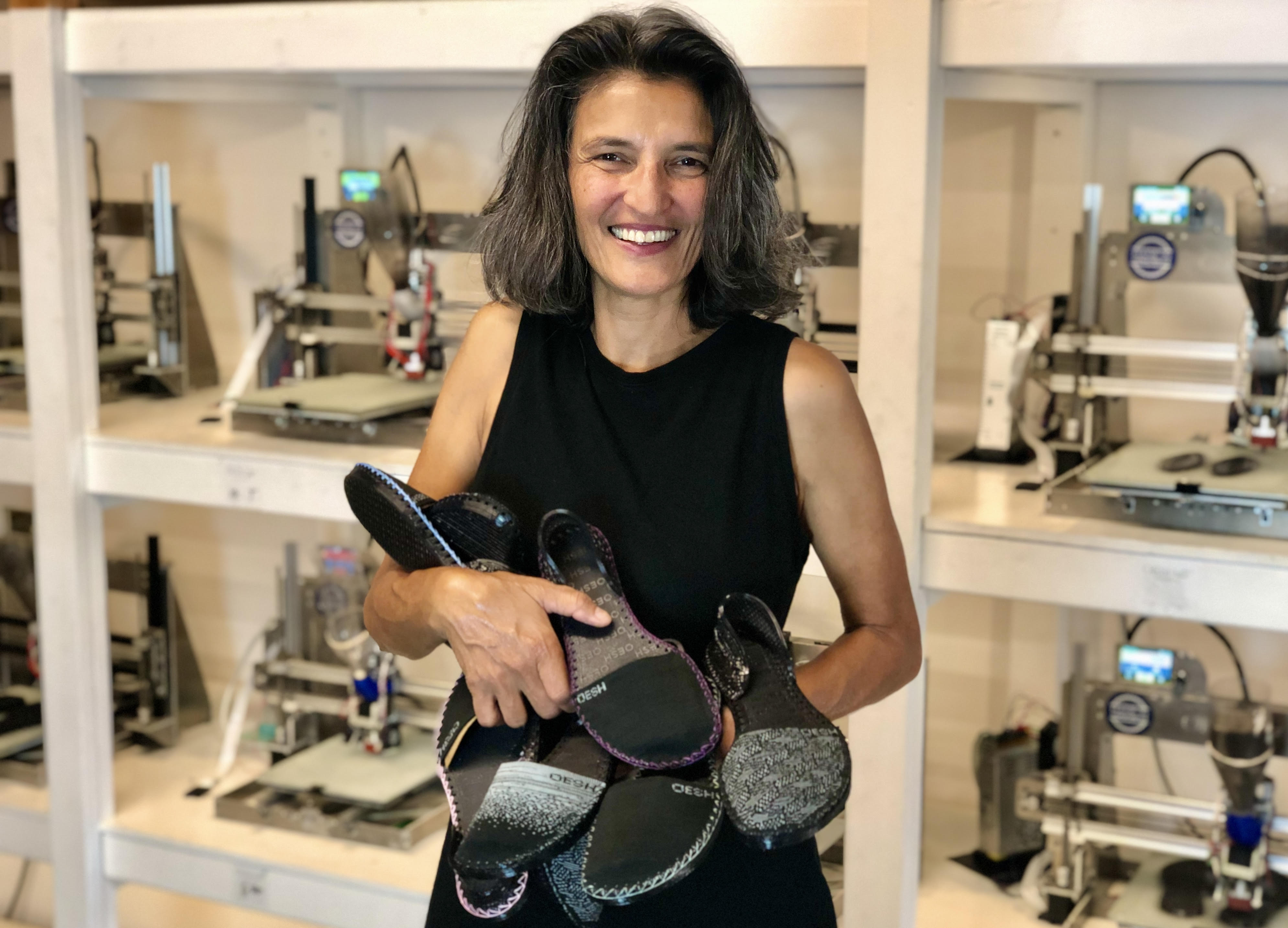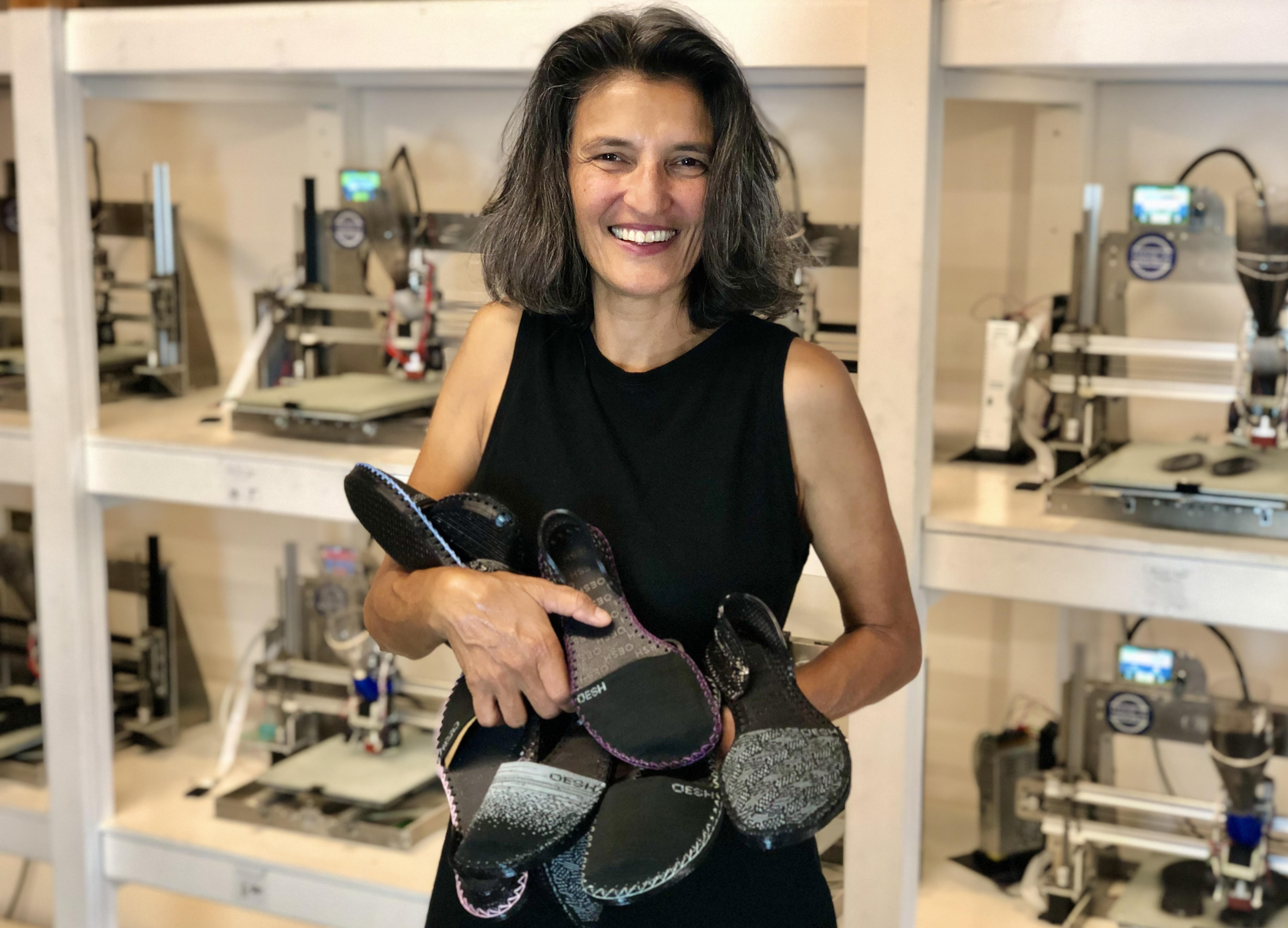If you’d run into me 12 years ago, I would have laughed if you’d told me I’d soon walk away from my very, very good job at a prestigious medical school — the kind of job people wait for their entire careers — to enter an industry where I had zero experience and become, basically, a cobbler.
If you’d met me back then, you probably would have thought I had it all.
I had a well-paying, full-time, coveted position at one of the best public universities in the country. And I was the first woman to chair my department. I had a family with a husband and three amazing kids, and I loved the students I worked with.
But despite all of it, something kept gnawing at me. And it would eventually lead me to risk everything I’d worked on for decades to take a chance on a dream.
My career started after I graduated from Harvard Medical School, and I became the researcher who first discovered the link between high heels and knee arthritis. It sounds like common knowledge now, but that’s because we actually proved it with peer-reviewed science back in the late 1990s. It was really big news at the time. I was on the television show 20/20, quoted in Cosmopolitan magazine, the New York Times, USA Today and more. And then it got even crazier. That discovery was only the beginning of what I later found — that all women’s footwear, from high heels to clogs to running shoes if you can believe it, abnormally increases impact on the joints.
Besides being unhealthy and problematic for women’s bodies, this knowledge seemed like a social injustice to me. It just didn’t seem right to find that the footwear industry was knowingly making footwear that science proved to be harmful specifically to women’s feet and joints.
But my role, at least so I thought back then, was in academia. I was a doctor, a researcher, a scientist. Not someone with any ties to the footwear industry. So I continued my work into the science of movement and gait and went on to become the first female tenured chair professor in the school of medicine at the University of Virginia.
Still, I kept trying to figure out how to turn all the years of research I had conducted, everything I knew to be true about how harmful most women’s shoes are to not only feet, but also the rest of the body, into something that created real change.
Of course I first tried talking to people in the footwear industry. It was their problem and their area of expertise, so surely they would want to use what science proved to be the case and change how they were making women’s footwear, right?
Actually, the opposite was true.
When I talked to major shoe companies, shared my research and tried to convince them to create shoes that would reduce, rather than increase impact on the joints in the body, they were not interested in changing their products. In fact, I soon realized that the implications of my research were threatening to them. Listening to me would require them to make significant changes in how they designed and manufactured shoes. It would be disruptive, costly and difficult. One by one, they all said no.
It was beginning to look like the only way to get healthy shoes made was to make them myself.
While I had spent decades studying how footwear affects women’s bodies, I had no background in making shoes. What’s more, I had a dream job. A great life. A stable career. A steady and enviable income.
You’d think I should have been satisfied. But I wasn’t. There were plenty of people who thought I was half-crazy when I announced I’d be quitting my position at the University to start my own shoe company and, just to add to the implausibility of it all, building my own factory in the college town where I lived.
But I didn’t have time to worry about what other people thought. I had to figure out how to make these shoes. I was on a mission. Luckily, my husband, Bob Kusyk, left his job to become the CEO so I could concentrate on inventing an entirely new manufacturing process for shoes. Now we were all in as a family. We were taking a big risk, and we knew we had to succeed.
It soon became clear that the changes we needed to make to shoes were not going to be easy to produce, so I needed to invent new manufacturing processes. We first tried an injection-molding machine and were molding shoe soles one pair at a time. Before that, we were winding carbon fiber springs around steel mandrels with a machine that was designed to make rocket fuselages, not shoe soles. It was quite an adventure in trial and error.
Eventually I began figuring out how to 3D print the unique springy material that we were using to make shoe soles that are better for women’s joints and bodies. I knew that 3D printing could fast-track our sole development and that we could even use 3D printing for some of our production. But there was a big problem: the typical 3D printer couldn’t print our material.
Instead of stopping there and giving up because what we needed didn’t exist, we shifted gears to invent a 3D printer that could accomplish the task. With our own tools and machinery in house, we built a series of 3D printers with special extruders that could 3D print the material we wanted, which also happens to be 100% recyclable. Around that time, we were fortunate to receive $900,000 in grant funding from the National Science Foundation to support the research and development to develop this now patent pending 3D printing process.
Instead of an injection-molding machine, we now have on the back wall of our factory an army of 3D printers each making a pair of soles that are made into complete footwear right here in town. At the other end of the factory are the machines that we use to continue building more 3D printers based on demand.
Beginning with our very earliest days in manufacturing and throughout all of the trials and tribulations we’ve experienced in development, we’ve built a loyal following of now over 12,000 repeat buying, fiercely loyal customers.
Meanwhile, our success has earned us tremendous respect in the shoe industry such that we now have partnerships with the biggest, best factories in the world. We’ve developed unique 3D manufacturing processes such that these factories can use new processes to make shoes using far less energy, water and nonrenewable resources than any other shoe made overseas.
Now in our 11th year, I can look back and see that taking the biggest risk of my life was not only worth it, but crucial to arriving at a life I love living more than any other I can imagine. It truly does sometimes feel like a dream to get to wake up everyday and get to do what I do. I’m so passionate about this that we actually named our Dream shoe after the feeling. But the best news is possibly this: the chance you’ve been wanting to take may be the very thing that will make your dreams reality, too.
Follow us here and subscribe here for all the latest news on how you can keep Thriving.
Stay up to date or catch-up on all our podcasts with Arianna Huffington here.


